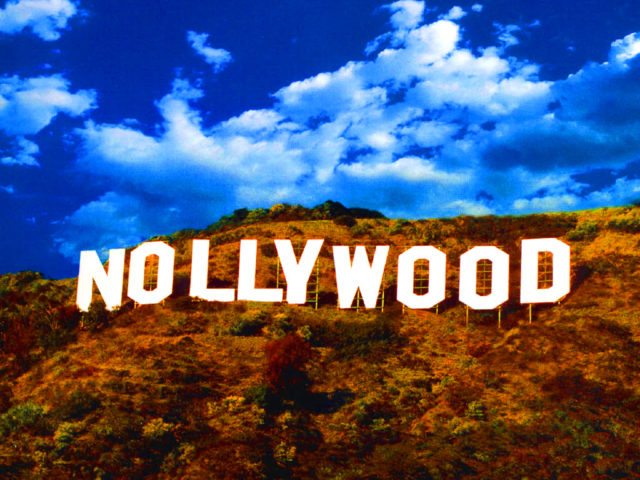
The story around the successful screening and streaming of Jagun Jagun is now over, or so it seems. It is an exceptional film, no doubt. While some critics of history were busy detailing why it is a work that falls short of its historical narrativity and why it should be read as such, others discussed its success within the plot structure and aesthetic narrative concerning magic, flashbacks, crimson, acting style and the use of relevant ornaments peculiar to age, race and time of event. But these are familiar and quotidian areas that most critics and ordinary viewers discuss when films hit the cinemas or are set up for streaming platforms across relevant spaces. What they fail to realize is that there is more to a good or relatively good film nowadays, especially as most filmmakers have moved up in the employment of technology, the decision to collaborate with another veteran filmmaker whose vision aligns with theirs or perhaps who they consider worthy to work with following their profound reputation in film art and relative successes they accomplished in previous works.
The combination of Femi Adebayo and Niyi Akinmolayan (himself a director of a good number of films, including The Set Up, 2019, The Set Up Part 2, 2022, Wedding Party 2017, Arbitration 2016, and Room 305 2016) of Anthills Film Production in Lagos, Nigeria, was an excellent pair. It reminds us of the kind of achievement that distinct and distinguished directors and artists can achieve when a sense of mutual admiration is at the heart of such collaboration. One of the areas that most critics have yet to critically espouse, is the use of relevant stars and how the brilliant combination of two generations of stars made this film come alive and took the world of Nigerian film enthusiasts by storm. This area was ‘consciously’ neglected, either because it did not matter in the assessment of the movie or because there was nothing to be said about the stars other than the fact that the team put together a solid crop of actors who had the potential of making the film a tour de force. In my view, the explication of the performances of these stars from (of two distinct generations) 1.
The old Ojo Ladipo Travelling Theatre group, Adebayo Salami, etc. and 2. Femi Adebayo and Odunlade Adekola of the generation that followed almost immediately. Now we understand that there is an evolving third generation with a crop of players exhibiting their potential with great acting with actresses like Bimbo Ademoye, (who straddles between the Nollywood-English and Nollywood-Yoruba Nollywood and does so brilliantly, as pieces of evidence have shown) including her contemporaries. Opinions on stars’ performances remain significant to any film analysis or critique as long as the film is discussed. The star system in Nollywood is structured around the preference of a director, and one often observes that specific directors employ the services of a group of film actors with whom they have a relationship and are also the toast of the audience. Indeed, this assessment of actors’ performance in movies is not divorced from the roles they play.
They work enormously to curate our thoughts around who plays what, what role one has been playing, what role one has been used to playing, and what role audiences think is tied to a particular actor-performer. In Nollywood cinema, audiences have expectations but are usually stunned by what appears to be the creative actor’s ingenuity and prowess when they encounter their ‘stars ‘ and ‘actors’ whose roles they are familiar with have become accustomed to. The tendency to switch from one role to something that calls in the deviation ‘from the norm’ instigates a systematic appraisal of the ingenuity of a star actor. It calls into question how we, as commentators, can find new ways to analyze the ‘forte’ , ‘performance strategy,’ and ‘act’ of a single performer or a group of performers we are familiar with in Nollywood. Noah Tsika once reiterated how film stardom remains a significant ‘discursive construction’ that steadily developed as well as sustained through semiotic means; ‘an individual star persona is mutable (albeit in often subtle ways and regardless of personal or corporate protestations), and the operations of a so-called star system provide a critical window through which to look not simply at a series of film works but also the entire film industry.’ Tsika’s argument resonates profoundly with Nollywood performers, stars, and actors. Nothing can be too small to attempt on Nigerian film stars and performers in discursive terms about multiple functions, engagements, and interactions with other professionals and artists of mediating texts and those associated with ‘the screen’ because they deserve critical attention, which is hardly done in Nollywood today since Noah Tsika’s ambitious attempt in 2015. Nollywood Stars: Media and Migration in West Africa and the Diaspora, Bloomington, IN and Indianapolis, IN: Indiana University Press.
Strictly speaking, stars contribute to a film’s popularity and success in many ways-whether at cinemas or on other distribution platforms. They are visible media labourers of existing films, the chosen and yet significant mobile and human projections of the following film texts, gestating screen scripts, the current film that is being edited in small and large studios, the next TV commercials, the TV series, the artists in resident at relevant institutions of higher learning. They are the ‘heavenly bodies’ whose earthly performance activities engage and compel us to think through the world’s puzzles, trappings, joys, anxieties, pity and amusement as we exist. Indeed, the consensus in film studies is that star systems are integral to the marketing and exhibition of commercial cinemas everywhere in the world. Of note, the star system has always been crucial to Nollywood’s marketing model, but one will begin to wonder if anyone has pinpointed when the pantheon of stars was first formed. One suspects that the public recognized faces from television programs, and from theatre in the case of early Yoruba films. But perhaps, there were stars who owe their stardom strictly to the video film boom of the 1990s.
•Onikoyi lectures in the Department of Film at the University of Regina, Regina Saskatchewan, Canada. He is also a researcher and a member of the board of the Humanities Research Institute of the same University. He is co-editor of The Cinema of Tunde Kelani: Aesthetics, Theatricalities and Visual Performance. (Newcastle: Cambridge Scholars Publishers, 2021).





